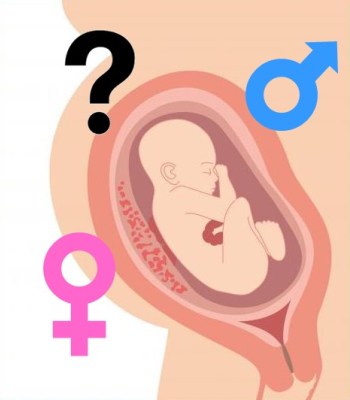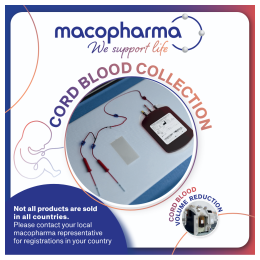You are here
Your Placenta and Your Baby's Sex
 Pregnant moms tend to read a lot of maternity blogs, so this field is ripe (pun intended) for bloggers trying to cash in. But sometimes the stories that bloggers cover over and over are not even true, and moreover they are not the most interesting story out there. One example is the relationship between your placenta and the sex of your baby.
Pregnant moms tend to read a lot of maternity blogs, so this field is ripe (pun intended) for bloggers trying to cash in. But sometimes the stories that bloggers cover over and over are not even true, and moreover they are not the most interesting story out there. One example is the relationship between your placenta and the sex of your baby.
Myths about Anterior Placenta
Some bloggers will tell you that having your placenta in the anterior position means that you are probably having a girl1. Some bloggers will use a clickbait title like, “Does an Anterior Placenta Mean You're Having a Girl?”, but then will debunk the connection in the text of the blog2,3. Why does this topic come up over and over?
The reason that anterior placenta keeps being associated with baby girls is due to one study which was conducted in Iran and published in 20144. That study performed ultrasounds on 200 pregnant women and found that 72.8% of the female babies had an anterior placenta4. If you google the keywords “placenta position” combined with “baby sex”, the Iran study will come up in the AI summary. Despite the persistence of this study in keyword searches, it has not been validated by subsequent medical research: There is no known association between the location of your placenta and the sex of your baby5.
Your Placenta has a Sex
There is a much more interesting story to tell about your placenta and your baby’s sex: your placenta has a sex! In fact, the sex of your placenta matches the sex of your baby, because most of the placenta grows out of the fertilized egg and matches the baby’s genetics6,7.
Given that a placenta is either male or female, does that effect the performance of the placenta? Yes, medical research says it does. It has been known for centuries that girl babies are much more resilient than boys and have better outcomes from maternity complications8-11. A growing body of evidence shows that the survival skills of girl babies are facilitated by the nourishment they receive from a female placenta12-14.
The key difference between how girl and boy babies grow in the womb is that boy babies prioritize size. Starting from conception, males grow faster than females, and by the time of birth the average male newborn in the US weighs 0.44 pounds more than the average female (7.50 lb vs 7.06 lb)15. But the price that boys pay for this evolutionary emphasis on size is that they are less able to adapt to environmental stress. Male babies are more likely to be spontaneously aborted or born premature9,11. Male babies are more susceptible to a variety of stresses during pregnancy, such as preeclampsia (maternal high blood pressure)10,11. Medical researchers believe that female placentas do a better job of managing stress in utero thanks to chromosome-linked gene expression. Studies of male versus female placentas from full-term pregnancies have revealed widespread differences in hormone signaling, immune signaling, and metabolic functions12-14.
The next time someone tries to tell you that your placenta can reveal your baby’s sex, you will know that the truth is the other way around:
|
DISCLAIMER: The website of Parent’s Guide to Cord Blood Foundation can supplement your knowledge but cannot substitute for medical diagnosis and advice. If you have concerns about your pregnancy, you should consult a qualified health care provider.
References
- @boydandgiselle Anterior Placenta Gender Prediction Study. TikTok. Accessed 2025-04-01
- Aggarwal A. Does an Anterior Placenta Mean You're Having a Girl? Lybate Health Feed. Published 2024-11-02
- Healthline. Staff. Does an Anterior Placenta Mean You’re Having a Girl? Healthline. Accessed 2025-04-01
- Jafari RM, Barati M, Bagheri S, Shajirat Z. Fetal gender screening based on placental location by 2-dimentional ultrasonography. Tehran Univ. Med J. 2014; 72(5):323-328.
- Verter F. Placenta Position and When it Matters. Parent's Guide to Cord Blood Foundation Newsletter Published 2025-04
- Boss AL, Chamley LW, James JL. Placental formation in early pregnancy: how is the centre of the placenta made? Human Reproduction Update. 2018; 24(6):750–760.
- Braun AE, Mitchel OR, Gonzalez TL, Sun T, Flowers AE, Pisarska MD, Winn VD. Sex at the interface: the origin and impact of sex differences in the developing human placenta. Biology Sex Differences. 2022; 13:50.
- Tynan J. Boys Are More Demanding Than Girls Before They Are Born. Neuroscience News. Published 2022-04-26
- Ingemarsson I. Gender aspects of preterm birth. BJOG. 2003; 110(S20):34-38.
- Liu Y, Li N, Li Z, Zhang L, Li H, Zhang Y, Liu J-M, Ye R. Impact of gestational hypertension and preeclampsia on fetal gender: A large prospective cohort study in China. Pregnancy Hypertension. 2019; 18:132-136.
- Broere-Brown ZA, Adank MA, Benschop L, Tielemans M, Muka T, Gonçalves R, Bramer WM, Schoufour JD, Voortman T, Steegers EAP, Franco OH, Schalekamp-Timmermans S. Fetal sex and maternal pregnancy outcomes: a systematic review and meta-analysis. Biology Sex Differences. 2020; 11:26.
- Rosenfeld CS. Sex-Specific Placental Responses in Fetal Development. Endocrinology. 2015; 156(10):3422–3434.
- Meakin AS, Cuffe JSM, Darby JRT, Morrison JL, Clifton VL. Let’s Talk about Placental Sex, Baby: Understanding Mechanisms That Drive Female- and Male-Specific Fetal Growth and Developmental Outcomes. Intnl. J. Molecular Sci. 2021; 22(12):6386.
- Tekola-Ayele F, Biedrzycki RJ, Habtewold TD, Wijesiriwardhana P, Burt A, Marsit CJ, Ouidir M, Wapner R. Sex-differentiated placental methylation and gene expression regulation has implications for neonatal traits and adult diseases. Nature Comm. 2025; 16:4004.
- Miles K, Rosenberg D. Average weight and growth chart for babies, toddlers, and kids. BabyCenter. Published 2025-04-25


